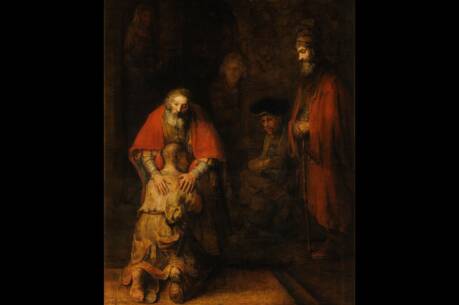How can we know that Christ is near?
All things come to an end. This is most immediately true of the liturgical year, which concludes on the afternoon of Dec. 1. Because next Sunday’s Gospel reading comes from John, the Gospel passage the church reads this Sunday will be the last Sunday reading from Mark until the First Sunday of Advent two years from now.
‘In the same way, when you see these things happening, know that he is near, at the gates.’ (Mk 13:29)
Where do you see the tender branches and sprouting leaves that reveal Christ’s presence?
Where do you find signs that Christ is “at the gates,” about to make his disruptive presence felt?
Mark 13:1-37 comes from a tradition called the Synoptic Apocalypse. This passage (and its parallels in Mt 24:1–25:46 and Lk 21:1-36) recounts Jesus’ teaching about the end of the world and the last judgment. By long tradition, the Roman Church reads from these Gospels at the end of the liturgical year. Many of the Gospel readings during the first weeks of Advent come from the Synoptic Apocalypse as well. As a result, the church will read Luke’s account of this same tradition in two weeks on the First Sunday of Advent.
In Matthew, Mark and Luke, Jesus delivers this apocalyptic sermon during his ministry in Jerusalem, just after his triumphal entry and just before his crucifixion and death. Although the Synoptic Apocalypse does not form the final portion of any of the Gospels that preserve it, it is a fitting finale to the church’s reading of Mark. In this passage Jesus explains the reason for his mission. The end of all things is coming soon. The Father sent the Son to announce the good news and track down the lost sheep of the House of Israel who have remained faithful in spite of the many challenges to belief. He would gather them into one flock and bring them to the Father before the coming apocalyptic crisis. Any who believe in Jesus’ message and serve his mission will be saved when he comes again and reveals himself to be the Son of Man whom Daniel foretold.
Mark’s community lived in a time of turmoil and probably wondered whether Jesus’ return was near, but the Gospel warns against seeking out dates and times. Jesus turns his disciples’ attention instead to signs of his subtle presence. He uses the example of a fig tree’s springtime growth to describe such signs. Most trees in Jesus’ native land are evergreen, but the fig grows and loses its leaves in yearly cycles, like deciduous trees in colder climates. Farmers knew spring was near when they saw a change in the fig’s branches. Similarly, disciples who paid attention could notice changes around them that heralded Jesus’ arrival. An essential task of a disciple, in Mark’s day as well as ours, is to seek out “signs of the times,” evidence that Jesus is at work and about to make a saving appearance.
In the years since the writing of Mark’s Gospel, the church has deepened its understanding of these signs. Disciples seek them not primarily out of apocalyptic expectation but to identify where the risen Christ is still at work in the world. Sometimes this work is as gentle and hopeful as new life in springtime. Sometimes it is disruptive, as Mark puts it, like “an enemy at the gates.” Either way, a disciple who seeks these signs can help the risen Christ restore some fallen corner of creation to the dream that God first had for it.
This article also appeared in print, under the headline “Know That He Is Near,” in the November 12, 2018, issue.








